In many ways, goats can be ideal livestock. They aren’t too big, are surprisingly productive, affordable, and they don’t require too much land. You can easily handle a large herd of goats yourself once you know what you’re doing.
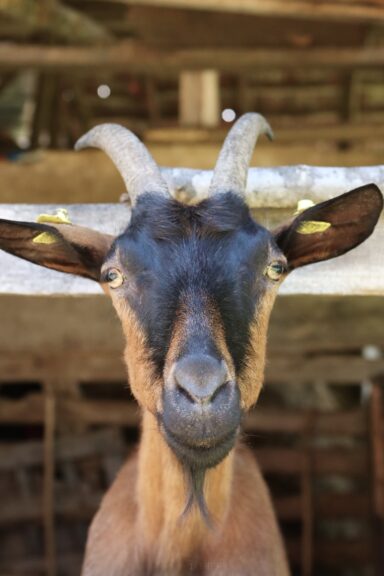
But just like every other livestock species, picking the right breed counts for a lot. If you want lots of milk, look no further than the Alpine goat.
These legendary dairy goats produce literally gallons of milk daily and are famously easy to handle. Keep reading, and I’ll tell you everything you need to know to get started raising them yourself.
What Are Alpine Goats Raised For?
Alpine goats are most commonly raised for their milk. Although their milk is not as known for richness and sweetness as some other famous dairy breeds like Saanens and Toggenburgs, they are incredibly consistent and high-output milkers. A small herd of Alpines can easily keep a modest local dairy business afloat!
And although they are not famous for it, Alpines are also a good choice for meat thanks to their large size, ample yield, and good fat ratio which produces flavorful, moist, and tender meat.
Plus, thanks to their friendly, calm temperament and the fact they are very easy to handle, they are quite popular at livestock expos and goat competitions.
They’re also big and beautiful, and sure to attract the affection of goat fanciers! If you ever wanted to strut your stuff on the show circuit, Alpines are a great way to get into it!
Origins
Alpine goats come from, where else, the Alps, and the stereotypical Alpine is sometimes better known as the French Alpine because they come from the French section of the Alps.
They also happen to be one of the very oldest, potentially the oldest, domesticated breeds known. There are records of the Alpine goat hailing from Europe that go back to at least the 1600s, and we know from circumstantial evidence that they’re much older than that.
But, fast forwarding a few centuries, the breed became properly known to America when they were first imported in 1922: a handful of those and boxes were brought over from France, where at the time, they were very popular, and a domestic breeding program was taken up here stateside.
From there the goats were sold, subsequently bred, and then continually imported to America from Europe. The French Alpine was officially here to stay!
They’ve been with us ever since, and Americans aren’t the only people to recognize the superior dairy utility of the French Alpine goat; they are among the most popular in the world, throughout Europe today, and also elsewhere, and that popularity is showing no signs of diminishing!
Physical Characteristics
Among the most productive dairy breeds, Alpines are quite large. They are tall, straight-backed, and have a medium build. Rams reach a mature weight of around 160 pounds, while does are a fair bit lighter at around 130 pounds. They stand between 2 ½ feet and nearly 3 feet tall at the shoulder.
Their heads are long, with flat, slightly tapering faces, medium-sized ears that stick out straight or at a slight upward angle, and prominent but smooth ridges or brows above the eyes.
They’re commonly said to have a graceful or dignified appearance thanks to their clean lines, short coats, and upright, erect heads and neck. No wonder they’re so popular on show circuits!
Males and females have horns as a rule, though they are small, gently curving, and sweep back directly off of the head. They’re not particularly prone to snagging. You’ll commonly find them disbudded, and males have prominent but short beards.
Fur Colors
Alpines are among the most beautiful goats around, and they come in a wide variety of stunning colors.
Common colors are:
- pied,
- chamoisee,
- broken chamoisee,
- two-tone chamoisee,
- cou noir,
- cou clair,
- and cou blanc.
Concerning the latter three, they are, in order, a black neck and black front quarters with a white rear (cou noir), tan front quarters and off-white to gray shading transitioning to black hindquarters (cou clair), and white front quarters with black hindquarters and mixed black or gray markings on the neck and head (cou blanc).
Another iconic and truly gorgeous fur color and pattern is sundgau, which is a striking black and white varied pattern that might consist of large patches or contrasting stripes.
Truly, no matter what kind of color or pattern you like, there’s bound to be at least one that will please with Alpines!
Temperament
Alpines are goats that everyone loves. Or, for some people, love but still despise!
Kidding aside, these goats are famously friendly, sociable, and personal, and they are always eager to get some attention and affection from their human keepers.
However, they are notorious for being curious, adventurous, and highly escape-prone, even by goat standards. Keeping them in place and out of trouble can be a full-time job, and they will put any enclosure to a truly severe test.
They also happen to be very vocal and are known to make noise at all hours of the day and night, particularly when agitated or playing around. Perhaps not the best breed if you care about having a quiet domain!
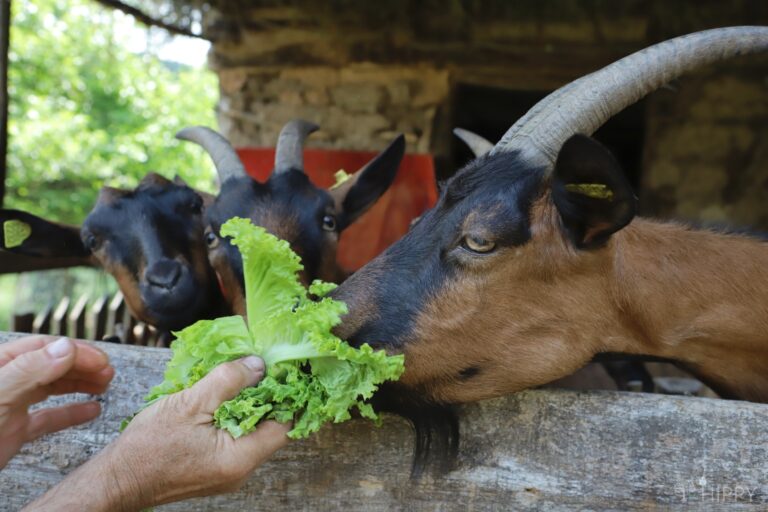
Are Alpines Polled?
As a rule, no, although there are a few strains out there that are supposedly polled. Alpines will have horns, both males and females, as a matter of course unless they are disbudded while young or dehorned as adults.
Don’t let that worry you too much because they will rarely get up to severe mischief with them, and even though you must respect them, bucks particularly, they’re not as ferocious or substantial as the horns on some other goats.
Milk Output
When it comes to sheer milk output, Alpines are extremely difficult to beat. Lactating does can produce anywhere from 1 to 3 gallons of milk a day. You read that right, three whole gallons!
This isn’t the rule, but I would never expect to get less than one or two gallons from a healthy doe that’s in good spirits and young.
Milk Quality
Alpines are likewise renowned for the quality of their milk, although you might say that it’s not exceptional by any one metric.
Their milk is said to be somewhat sweeter than average thanks to its higher levels of sugars and modest fat content of 3.5%. Alpine goat milk is also notably high in protein despite being low in fat, making it a particularly healthy option.
It is smooth, easy to drink, and delicious, assuming you like goat’s milk, it’s a popular choice for making ice cream, butter, and similar dairy products.
However, as always, you will need a cream separator since their milk, like the milk of all goats, is naturally homogenized.
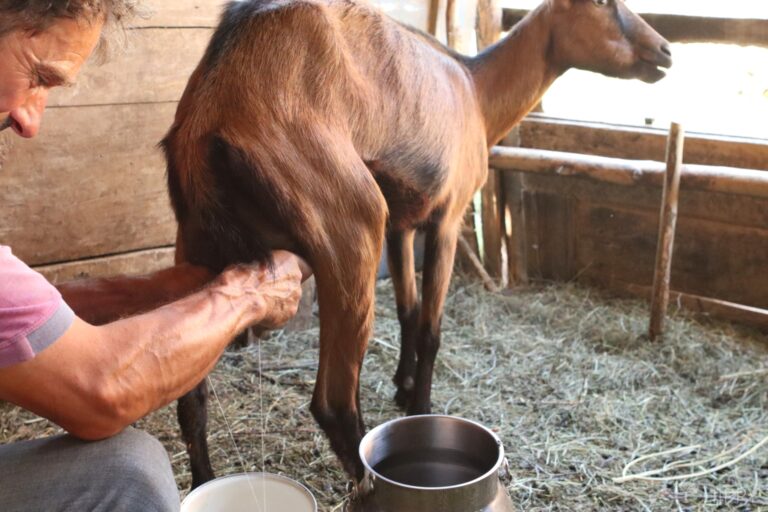
Alpines That are Scared or Stressed Will Stop Milking!
Even though Alpines are highly productive, almost boringly so, when it comes to milking, you must keep in mind that the milk will stop flowing if the girls get scared, stressed, or sick.
And compared to some other goats, Alpines seem particularly prone to anxiety stoppages. Sure, they might run around all over the place and cause no end of mischief for you, but if something is irritating them, the party is definitely over at the milking stand.
To this end, it is important to keep Alpines in a calm, safe environment and to eliminate sources of stress both from within the herd and without.
As long as you can do that, you’ll have more milk than you know what to do with your Alpine does.
Reproduction, Gestation, and Kidding
Alpine goats are seasonal breeders like most dairy goats, and they typically have a mating season that lasts from the beginning of summer to about the middle of winter, averaging from July to January.
Colder climates will see the breeding season begin and end earlier, while warmer climates typically have a breeding season that starts later.
An average Alpine doe will be ready to breed at about 18 months. Note that a weight benchmark of 80 pounds is especially important for preventing harm to the mother and miscarriages of the kids.
You won’t need many bucks unless you have an extra-large herd; a single young buck is more than capable of servicing around 25 females.
Speaking of servicing, females will stay in heat for about a day, or as long as 2 days, during her cycle with cycles typically being about 3 weeks in duration.
Does will commonly carry twins, and occasionally triplets. Singles are less common and quintuplets are possible though quite rare. Kids are born with mixed coloration after a gestation period of approximately 5 months.
Do Alpines Need Lots of Room?
Yes, as a rule. They don’t tolerate confinement very well for long, and as mentioned, they love to explore, play, and generally cause trouble. The more room you can give them the happier they will be, and the happier they are, the more milk you will get.
A bare minimum of 200 square feet of pasture space per goat is a good target to strive for, and more is better, as mentioned. Indoors, at least for extended stays, a minimum of 20 square feet per head is needed.
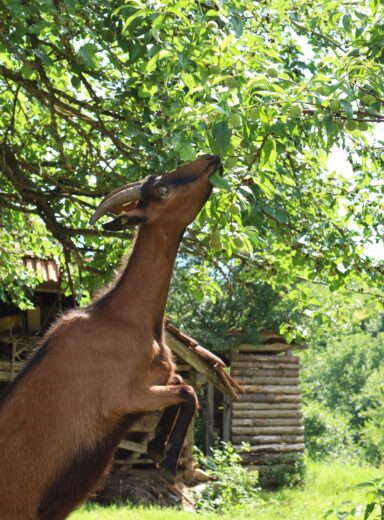
Shelter and Enclosure Considerations
It’s really difficult for me to impress upon you how critical a sturdy, secure enclosure is if you want Alpines, and that means tall and durable fencing.
These are mountain goats, and even though they have long been domesticated, those genes die hard: Alpines are excellent jumpers, superb climbers, and notorious escape artists.
I highly recommend that you have fences that are at least 4 feet tall, and only consider the strongest fencing materials like cattle panels or woven wire fencing. Posts must resist climbing, leaning, scratching, head-butting, and more.
And despite the name, Alpines aren’t quite as cold-resistant as you might be thinking, though they do fine in chilly temperatures unless things take a turn for the truly bitter.
A standard goat house or shelter is fine for them as long as you keep it supplied with fresh, clean bedding and it stays well-ventilated. That plus their body heat will keep them warm enough unless you are dealing with arctic conditions.
Ventilation is especially important because goats, including Alpines, are highly prone to various illnesses if they are forced to put up with stuffy, contaminated air – especially once they start pooping and peeing inside their shelter. Ammonia accumulation from urine is a major issue!
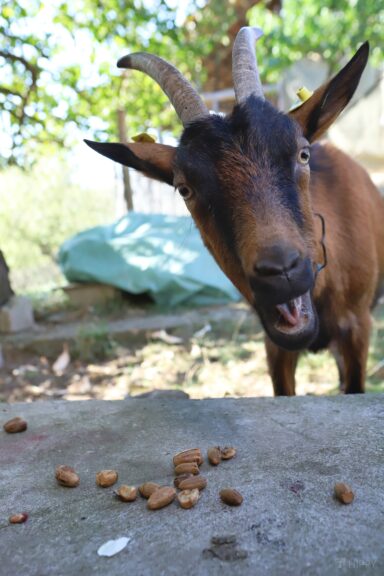
Feed Requirements
Your Alpine goats will need about 3% to 4% of their bodyweight in food daily, consisting predominantly of hay, either grass or legume, but also goat pellets and a few choice fresh foods like vegetables, fruit, grains, and so forth.
Because of their extreme milk production, does need more protein in their diet, and a regular course of supplements, including molasses for energy, is a good idea.
Health, Diseases, and Parasites
Alpine goats tend to be remarkably healthy among other domestic goat breeds, and especially among dairy goats, but they are still vulnerable to the usual battery of goat diseases, parasites, and ailments.
CAE, or caprine arthritis encephalitis, leads to chronic inflammation and degradation of the joints and connective tissue and, now and then, encephalitis in kids.
It often results in lameness. CL, or caseous lymphadenitis, is a bacterial infection of the lymph nodes that can sometimes affect internal organs and leads to a major downturn in health.
Johne’s disease, pneumonia, foot rot, enterotoxemia, and others are also common enough though Alpines are not particularly predisposed to susceptibility.
As ever, a major concern for Alpines is parasitic infection, particularly intestinal and stomach parasites like barber pole worms.
This infestation can result in rapid weight loss and eventually anemia, resulting in death. The usual lineup of external parasites in the form of lice, mites, fleas, and ticks should also be monitored.
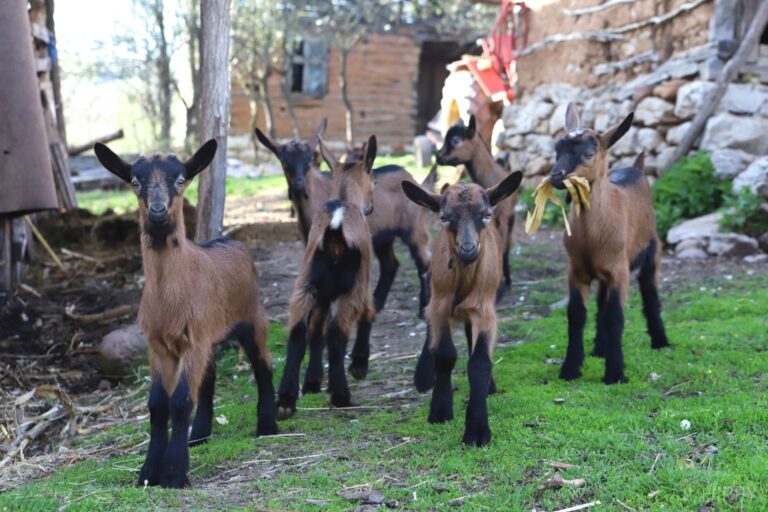
Lifespan
Alpine goats, in good condition with good nutrition and given proper care, can live quite a long time, anywhere from 15 to 18 years.
Are Alpines the Goats for You?
Alpine goats are the right ones for you if high-quality, high-protein, low-fat goat milk is what you’re after, and you want a whole lot of it.
They’re also an especially good choice if you want to occasionally harvest one for meat because of their high carcass yield or enjoy a fun and friendly relationship with your animals. Their sweet nature, natural curiosity, and tendency to be affectionate with people make them a joy to be around.
However, you need to be prepared to go all-in on keeping them contained: If you aren’t willing to invest in good fences and extra room for them to romp around in, you’ll constantly be dealing with damage and escapes.
As long as you can handle them being a little bit rambunctious, your Alpines will reward you with endless milk and plenty of laughs.
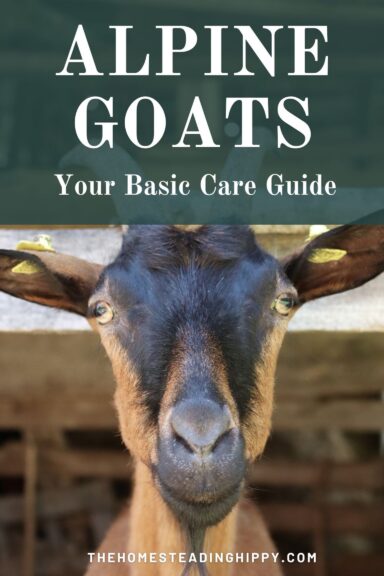
Tim is a farm boy with vast experience on homesteads, and with survival and prepping. He lives a self-reliant lifestyle along with his aging mother in a quiet and very conservative little town in Ohio. He teaches folks about security, prepping and self-sufficiency not just through his witty writing, but also in person.
Find out more about Tim and the rest of the crew here.
